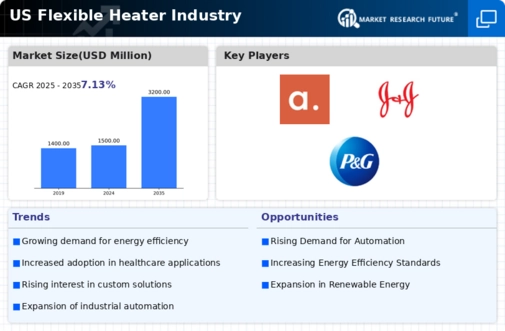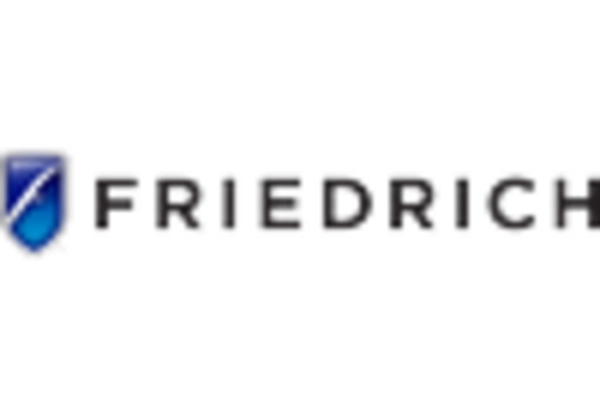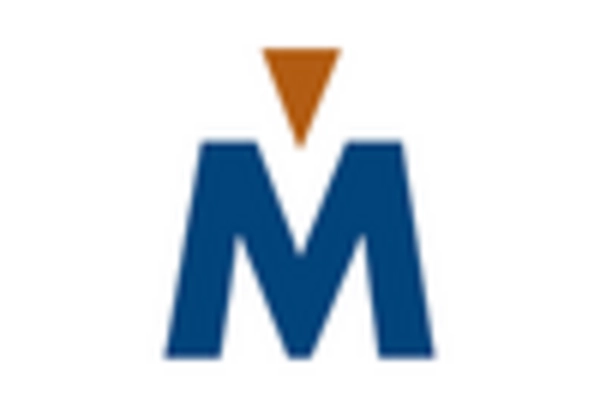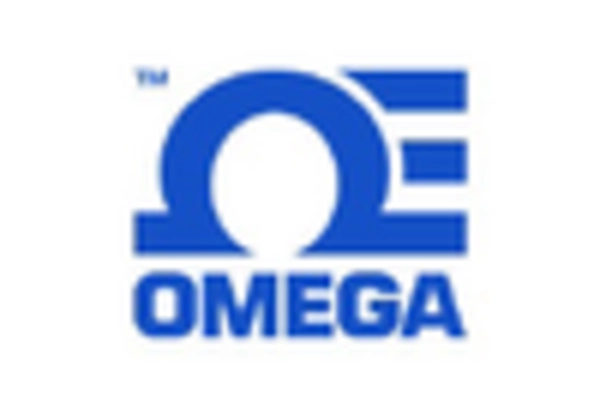Growth in Consumer Electronics
The flexible heater market is significantly influenced by the burgeoning consumer electronics sector. With the proliferation of smart devices, there is an increasing need for efficient heating solutions that can be seamlessly integrated into compact designs. The market for flexible heaters in consumer electronics is expected to reach $500 million by 2027, reflecting a robust growth trajectory. Manufacturers are leveraging flexible heating technologies to enhance product performance and user experience, particularly in applications such as wearable devices and portable electronics. This trend indicates a shift towards more innovative and efficient heating solutions, further solidifying the role of flexible heaters in the consumer electronics landscape.
Advancements in Material Science
Recent advancements in material science are playing a pivotal role in the evolution of the flexible heater market. Innovations in polymer and composite materials have led to the development of more efficient and durable heating elements. These materials not only enhance the performance of flexible heaters but also contribute to their versatility across various applications. The introduction of new materials is expected to drive market growth, with projections indicating a potential increase in market size by 15% over the next five years. As manufacturers continue to explore novel materials, the flexible heater market is likely to witness enhanced product offerings that cater to diverse consumer needs.
Expansion of the Automotive Sector
The flexible heater market is poised for growth due to the expansion of the automotive sector, particularly with the rise of electric vehicles (EVs). As automakers increasingly incorporate advanced heating solutions to enhance battery performance and passenger comfort, the demand for flexible heaters is expected to rise. The automotive industry is projected to invest over $100 billion in EV technology by 2030, creating substantial opportunities for flexible heater manufacturers. This trend suggests that flexible heaters will play a crucial role in the development of next-generation vehicles, further solidifying their importance in the automotive landscape.
Increased Focus on Energy Efficiency
The flexible heater market is benefiting from a heightened focus on energy efficiency across multiple sectors. As industries and consumers alike seek to reduce energy consumption and lower operational costs, flexible heaters present an attractive solution. These heaters are designed to provide targeted heating, which can lead to significant energy savings compared to traditional heating methods. The market is anticipated to grow by approximately 10% annually as organizations prioritize sustainable practices. This trend not only aligns with regulatory pressures for energy efficiency but also reflects a broader societal shift towards environmentally responsible technologies, positioning the flexible heater market as a key player in the transition to greener solutions.
Rising Demand in Industrial Applications
The flexible heater market is experiencing a notable surge in demand, particularly within industrial applications. Industries such as automotive, aerospace, and electronics are increasingly adopting flexible heating solutions due to their efficiency and adaptability. The market is projected to grow at a CAGR of approximately 8% from 2025 to 2030, driven by the need for precise temperature control in manufacturing processes. Flexible heaters offer advantages such as lightweight design and ease of installation, making them ideal for various industrial settings. As companies strive to enhance productivity and reduce energy consumption, the flexible heater market is likely to benefit from this trend, positioning itself as a critical component in modern industrial operations.
















Leave a Comment